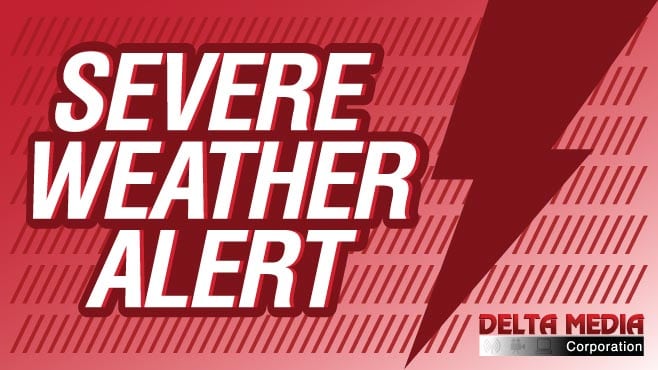
Prepare yourself for tropical storms and hurricane season with these helpful tips for your business:
STORE DATA IN THE CLOUD
Make sure all your systems are backed up in the Cloud just in case the power goes out. If you don’t already have a business continuity plan in place, copy all important data to a Cloud service like OneDrive, Dropbox or iCloud to make sure your files are protected.
Since there is an advanced warning when a tropical storm or hurricane approaches, it’s important to transport your data quickly and at the first sign of trouble.
SECURE YOUR SITE
Protecting your facilities and equipment is key to restoring operations in the event of a tropical storm or hurricane.
Make use of an Uninterruptible Power Supply (batteries and generators), backup water source and a supply of gasoline-powered pumps to keep the lower levels of your facility clear of flood waters.
Make sure you have surge protectors in place to ensure if the power goes out, so when it comes back on, there’s little risk of power spikes and your IT systems getting fried.
Board up of windows and other vulnerable areas to protect your building from high-speed flying debris.
Sandbag any area that is subject to flooding.
Secure electronics such as computers and other office equipment with straps or Velcro.
Anchor large furniture (bookcases, shelves, filing cabinets) to wall studs.
Relocate any valuables/petty cash to a safe location.
Secure all utilities including water heaters, gas tanks, and heaters. If possible, raise them
to higher locations to avoid water damages.
Turn off all the utilities prior to a hurricane or tropical storm making landfall if possible.
DESIGNATE and PROTECT IMPORTANT INFORMATION
Designate important contacts to have that are crucial to business operations, such as employees, banks, lawyers, accountants, suppliers, etc.
Backup documents that are not easily reproduced such as insurance documents, legal contracts, tax returns, and accounting statements to avoid water damage.
Seal paper documents in waterproof containers onsite if you can’t take them offsite.
Save all your designated contacts and documents in an alternate, accessible off-site location, and in the Cloud if you have them electronically. (Insurance company and agent’s contact information are very important to have.)
Take pictures of your business before the emergency.This will help you in case you have to file a damage claim.
Relay Emergency contact information to employees such as the nearest hospital and police, along with: Life safety issues: 9-1-1, Small Business Administration (SBA): 1-800-359-2227, FEMA Tele-registration hot-line: 1-800-462-9022
NOTE: Identify your mission-critical applications, essential backup data, storage of data offsite, relocation/placement of your employees, remote equipment and access to equipment (networking), and identification of key personnel and beyond (in case these employees are unavailable).
FIND A PLACE WHERE YOU AND YOUR STAFF CAN OPERATE REMOTELY.
Inability to access your facility is a highly probable occurrence when a tropical storm or hurricane approaches. Roads may be flooded or closed, your employees may be unable to leave their homes in a state of emergency, or may be afraid to leave their families.
It’s important to plan for contingencies so your employees can work remotely from their homes if possible. If employees must travel away from their homes to a remote location, address the financial implications of this now. Have cash on hand and expense accounts in advance for travelers. Consider pre-blocking hotel rooms if necessary.
IF ANY EMPLOYEES WILL BE STUCK IN YOUR FACILITY DURING THE STORM, STOCK UP ON THESE ITEMS NOW!
The below items should be gathered in one location at your place of business should a storm hit while you are on premises. This will help protect the safety of your employees should disaster strike during regular working hours and without ample notice.
- Battery operated radio or television
- Non-perishable three-day food supply for you and your employees
- Three-day supply of water for you and your employees (One gallon of water per person, per day)
- Coolers and containers for water and washing
- Blankets, pillows, cots, and chairs
- First Aid Kit and first aid manual
- Flashlights, batteries, light sticks
- Toolkit (basic tools, gloves, etc.)
- Camera and film for documenting damages
- Whistle/signal flare to signal for help
- Tarps, plastic bags, duct tape
- Cleaning supplies, including mops, towels and garbage cans
- Smoke alarms and fire extinguishers
- Electric generator
- Gas for vehicles, generators and other equipment
- Cash, ATM cards, credit cards proper identification
ESTABLISH A CRISIS-COMMUNICATIONS PLAN
Communications are important in any situation, but especially before, during and after a tropical storm or hurricane. Set up a communication tree where one employee contacts two or three, and on and on. This way you can coordinate emergency activities, warn employees of impending danger, and maintain contact. Consider all types of communications, especially voice and data and ensure your team provides all forms of contact (cell, text, landline, email, etc.).
PUT SHUT-DOWN PROCEDURES IN PLACE
If you must shut your business down, work with your team to establish shutdown procedures and ensure that they are part of your overall recovery plan. Include start-up procedure to facilitate re-occupation of your site after the storm is gone and it’s safe to return.
BACKUP POWER SAFETY TIPS:
Generator Usage: OPEI Reminds Home & Business Owners to Keep Safety in Mind
Follow manufacturer’s instructions and ensure proper ventilation
Generators are critical during severe weather events, when the power can go out, as well as bringing power to remote job sites and in disaster recovery and emergencies. During hurricane season, the Outdoor Power Equipment Institute (OPEI), an international trade association representing small engine, utility vehicle and outdoor power equipment manufacturers and suppliers, reminds home and business owners to keep safety in mind when using generators.
“Not having power when you need it is frustrating, so a generator can provide emergency backup power at a reasonable cost. But, it’s important to follow all manufacturer’s instructions when using one,” said Kris Kiser, President and CEO of OPEI. “For instance, never place a generator in your garage or in your home. The generator should be a safe distance from your home and not near an air intake.”
Take stock of your generator
Make sure equipment is in good working order before you start using it.
Follow all manufacturer’s instructions
Review the owner’s manuals for your equipment if possible (you can look manuals up online if you cannot find them) so you can operate your equipment safely.
Have the right fuel on hand
Use the type of fuel recommended by your generator manufacturer. It is illegal to use any fuel with more than 10% ethanol in outdoor power equipment (for more information on proper fueling for outdoor power equipment visit www.LookBeforeYouPump.com). If you are using fuel that has been sitting in a gas can for more than 30 days and you cannot get fresh fuel, add fuel stabilizer to it. Store gas only in an approved container and away from heat sources.
Ensure portable generators have plenty of ventilation
Generators should NEVER be used in an enclosed area or placed inside a home or garage, even if the windows or doors are open. Place the generator outside and away from windows, doors, and vents that could allow carbon monoxide to come indoors.
Keep the generator dry
Do not use it in wet conditions. You can cover and vent your generator. You can buy model-specific tents online or generator covers at home centers and hardware stores.
Only add fuel to a cool generator
Before refueling, turn the generator off and let it cool down.
Plug in safely
If you don’t yet have a transfer switch, you can use the outlets on the generator. It’s best to plug in appliances directly to the generator. If you must use an extension cord, it should be heavy-duty and designed for outdoor use. It should be rated (in watts or amps) at least equal to the sum of the connected appliance loads. Make sure the cord is free of cuts. The plug should have all three prongs.
Install a transfer switch
A transfer switch connects the generator to your circuit panel and lets you power hardwired appliances. Most transfer switches also help you avoid overload by displaying wattage usage levels.
Do not use the generator to “backfeed” power into your home electrical system
Trying to power your home’s electrical wiring by “backfeeding” – where you plug the generator into a wall outlet – is reckless and dangerous. You could hurt utility workers and neighbors served by the same transformer. Backfeeding bypasses built-in circuit protection devices, so you could damage your electronics or start an electrical fire.
Install a battery operated carbon monoxide detector in your home or business
This alarm will sound if any carbon monoxide comes into the building and alert you.
About OPEI
The Outdoor Power Equipment Institute (OPEI) is an international trade association representing more than 100 power equipment, engine and utility vehicle manufacturers and suppliers. OPEI is the advocacy voice of the industry, and a recognized Standards Development Organization for the American National Standards Institute (ANSI) and active internationally through the International Organization for Standardization (ISO) and the International Electrotechnical Commission (IEC) in the development of safety and performance standards. OPEI is managing partner of GIE+EXPO, the industry’s annual international trade show, and the creative force behind the environmental education program, TurfMutt.com. OPEI-Canada represents members on a host of issues, including recycling, emissions and other regulatory developments across the Canadian provinces. For more information, visit www.OPEI.org.


